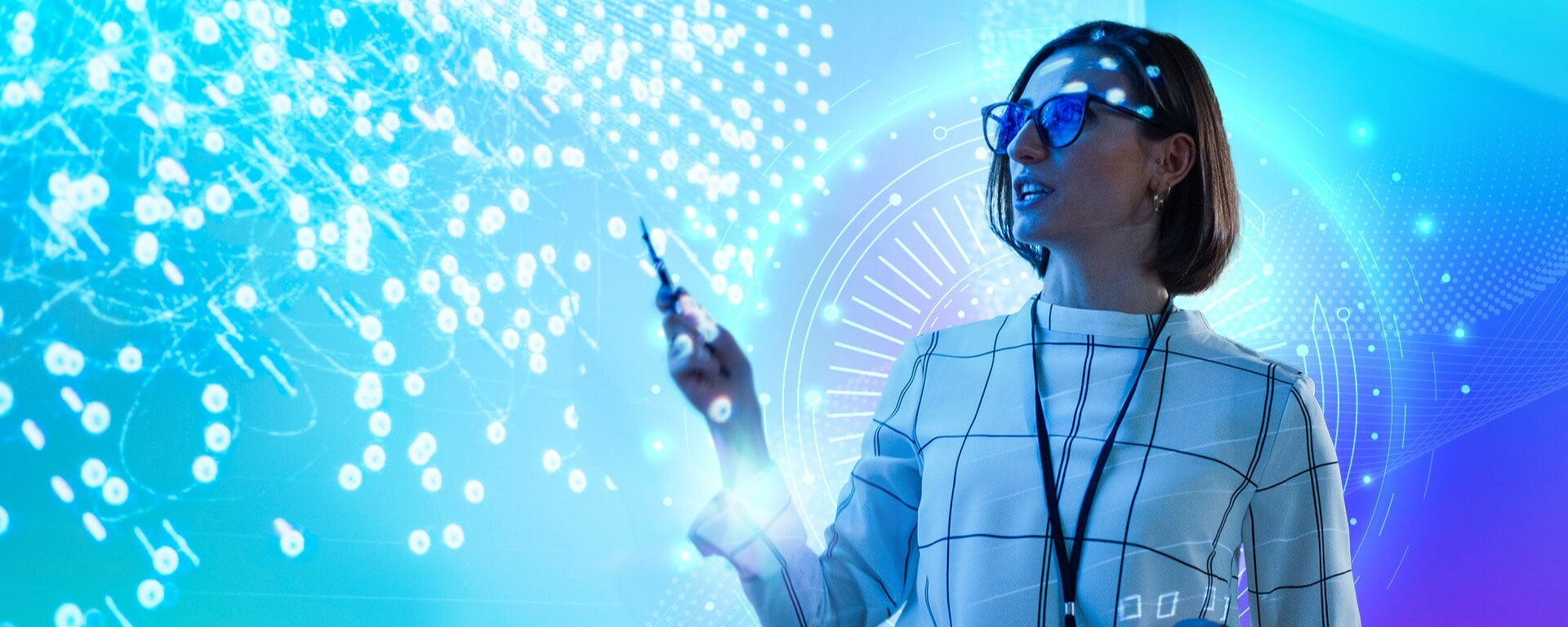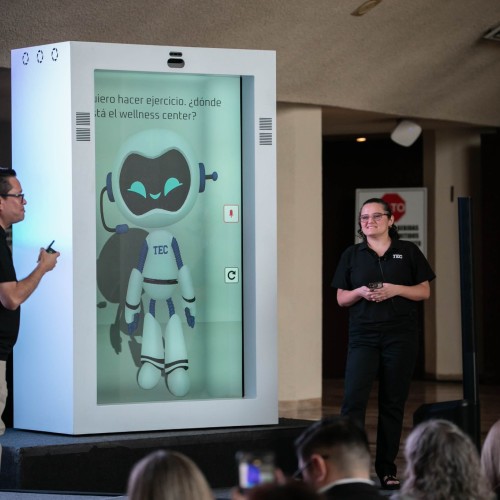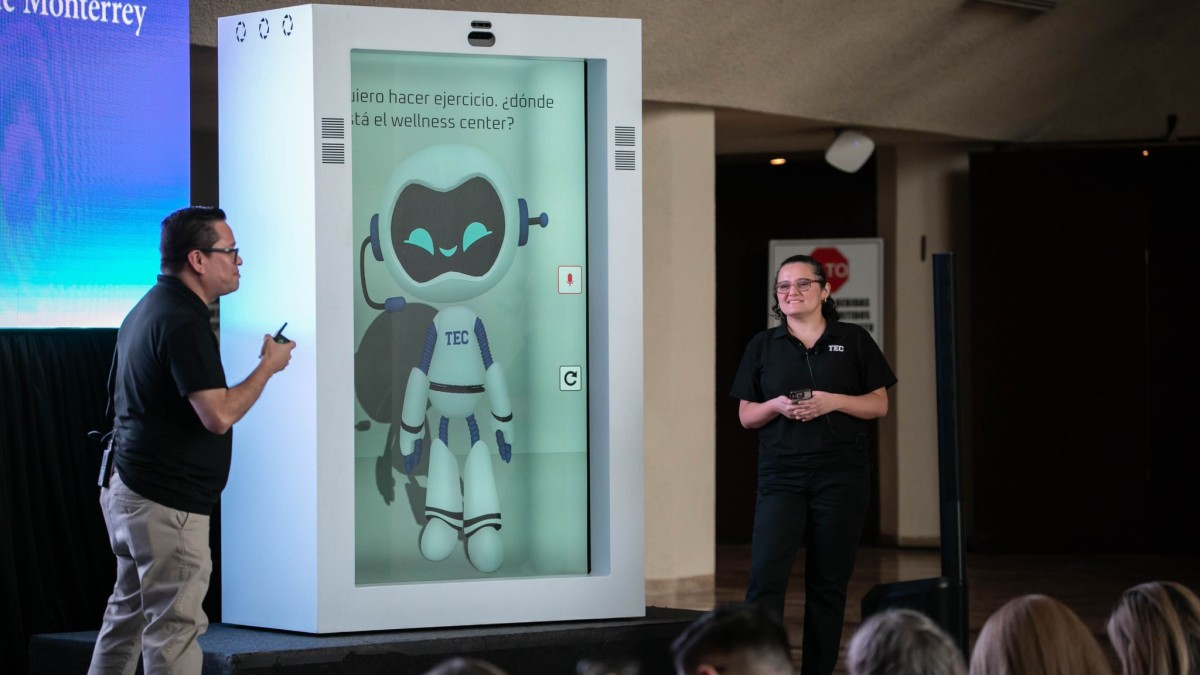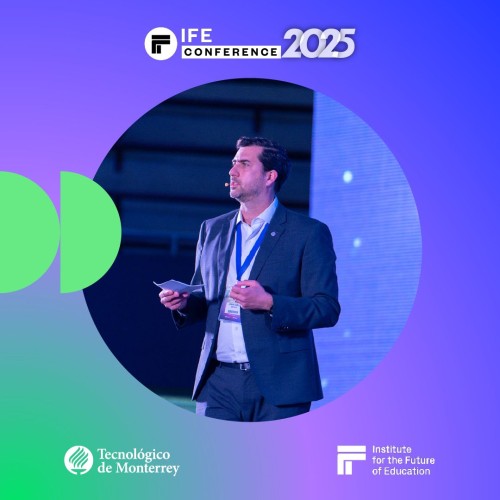Inteligencia Artificial en el Tec

Our Commitment to AI
At Tec de Monterrey, we aim to understand and apply artificial intelligence (AI) in education, seeing it as a key driver of innovation. We focus on helping our students develop both cross-disciplinary and specialized AI-related skills, preparing them for diverse professional and workplace scenarios, always from an ethical perspective.
Through research, education, and collaboration across disciplines, we promote AI-driven innovation, equipping our faculty and staff to use it efficiently and responsibly, ensuring a positive impact on our institution and community.
Our philosophy is to use AI ethically, respecting human dignity, promoting integrity and autonomy, and ensuring a safe environment aligned with our institutional values, addressing challenges and opportunities with agility.
Discover the World of AI: Beyond Fiction
We’ve all likely heard the term “artificial intelligence,” but do we know what it means? AI is about developing technologies that enable machines to perform complex tasks requiring skills like reasoning, problem-solving, understanding language, and analyzing data. UNESCO describes it as a set of tools that mimic or even surpass some human capabilities, such as creativity, language, and logical reasoning.
How does it work? AI is based on key principles: learning from data (machine learning), processing information through artificial neural networks, and optimizing decisions to make them more efficient. Thanks to these principles, AI systems can identify patterns, adapt to new situations, and improve their performance over time, mimicking some aspects of human thought processes.
From ANI to AGI: AI That Transforms
Are there different types of AI? Are they the same? What are they? Artificial intelligence (AI) is divided into two main types: Artificial Narrow Intelligence (ANI) and Artificial General Intelligence (AGI).
La ANI, que es la IA que usamos hoy en día, está hecha para tareas específicas, como jugar ajedrez, manejar coches o responder preguntas. Se basa en tecnologías como el aprendizaje automático, las redes neuronales y la optimización. También utiliza herramientas como la lógica simbólica y los grafos de conocimiento para organizar información. Un ejemplo de esto es ChatGPT, que puede procesar lenguaje y responder preguntas de forma natural.
Por otro lado, la IA General (AGI), busca igualar la inteligencia humana, pero es un objetivo que todavía está en desarrollo. Esta aspiración busca que las máquinas tengan habilidades cognitivas similares a las de los humanos, o incluso más avanzadas.
Source: Sabzalieva, E., & Valentini, A. (2023). ChatGPT and Artificial Intelligence in Higher Education: Quick Start Guide.


Eventos destacados


En el AI Day 2025, el Tecnológico de Monterrey destacó el potencial transformador de la inteligencia artificial en la educación, presentando innovadoras herramientas y soluciones que están revolucionando la enseñanza y la investigación. Descubre cómo este evento impulsa el futuro del aprendizaje.
Más información aquí.


En el IFE Conference 2025, expertos y líderes educativos internacionales se reunieron para explorar cómo la innovación y la tecnología están transformando el futuro del aprendizaje. Descubre más sobre esta experiencia única.
Más información aquí.